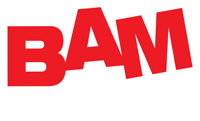1. Make sure your web site is fast
These days, nothing is worse than waiting for a site to load like you’re on a dial up modem. Especially when you’re waiting to buy something, speed is mission critical. The information age has produced a whole generation of incredibly impatient, attention deficient, prospective customers. As the internet itself gets faster with fiber and 5G it is becoming increasingly important that your site loads almost instantly.
There are many tools you can use to measure and improve your sites speed but the two that are most widely used are authored by the search engines themselves. Google’s PageSpeed and Yahoo’s Yslow tools both provide a clear and concise audit and instructions on what and how to improve you site’s speed. Some basic things you can do to instantly improve your page speed is minify CSS, minify JavaScript, remove query strings from static resources, specify image dimensions, specify a cache validator, specify a vary: Accept-Encoding header, avoid bad requests, minimize redirects, optimize images, defer parsing of JavaScript and leverage browser caching. If you don’t know what any of these terms mean, that’s OK, just make sure you hire a developer that does know.
2. Make it look good on mobile devices
The smartphone is no longer a luxury, it is now commonplace for most people to have the internet in their pocket and this has created opportunities to sell everywhere. To meet this new demand search engines have been penalizing site that are not mobile-friendly or “responsive”. Responsive design is an approach which makes web pages render well on a variety of devices and window or screen sizes. A responsive layout can improve the user experience and accommodate everyone, whether they are on a desktop or a smartphone or tablet. If you fail to test your site on all devices thoroughly, you will be creating a lot of friction for the user resulting in a high bounce rate.
3. Have a clear call to action
A Call to action (CTA) is an instruction to the audience designed to provoke an immediate response, such as a button that says “Buy Now” or “Subscribe”. Your website can be mobile-friendly with engaging quality content, but without a clear and concise call-to-action, you simply won’t convert traffic into customers. Users may want to convert but just don’t have the opportunity or means to do so. It is your job to provided them with a clear path to your end goal. Make your call-to-action clear, concise, prominent and compelling. Provide all the information users need so they know exactly what you want them to do next. Create calls-to-action that are relevant to the content and specific enough to not create more questions or friction. Place them in a very noticeable place on every page of your site. Whatever you do, make sure it is very easy for the user to convert when they are ready to.
4. Make sure you are providing a great user experience
You may be missing conversion if there is something off-putting about your site. Look at your bounce rate: if it is high, then you know there is something that is not appealing to users. You need to find out what the problem is and the best way is directly from the user. You can use tools such as heat maps and look at your user behavior using Google Analytics, or perhaps it will make your job easier to ask users directly with a quick survey.
A few common frustrations on websites include:
- Vauge or outdated information
- Difficult navigation
- Too many popups or ads
- Slow load time
- Foul color scheme or layout
Most of these problems are relatively easy to fix. Take your time investigating them and get the errors fixed as quickly as possible. Sometimes it is easier to hire a professional designer or developer that can knock these tasks out of the park and turn your shortcomings into upgrades.
5. Be Specific
Your site should be anything but general. A lot of website owners aim to please everyone – but they can’t – and end up isolating their entire audience. Perhaps you’re writing for the wrong audience, or writing for a larger demographic than you should be; whatever the case, inaccurate targeting could negatively impact your conversion rate. Your copy, branding, marketing and site design should speak directly to a niche demographic. Conduct thorough market research to properly define and know your target audience and demographic.
Finally… need help? Let’s have a conversation. BAM is here to help boldly build your brand.

Bob Abbate President Creative Director

